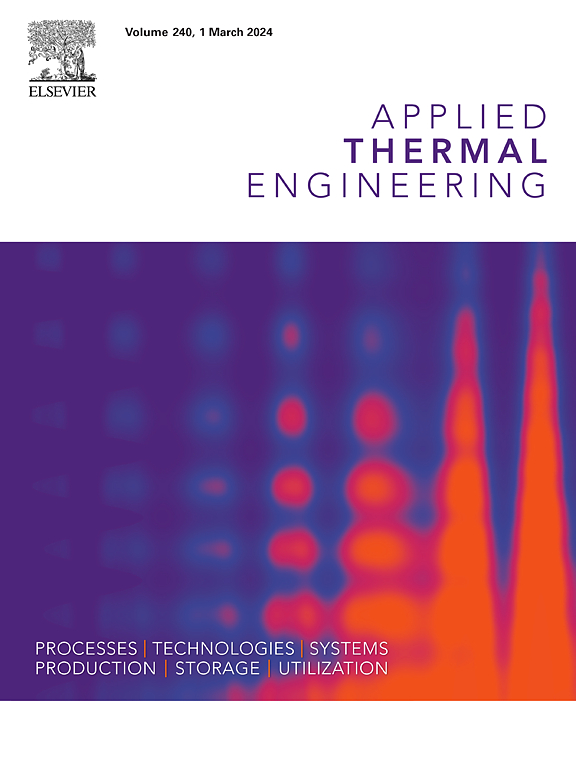High-efficiency application area in China of evaporative cooling garments: Effects of solar radiation and wind speed
IF 6.1
2区 工程技术
Q2 ENERGY & FUELS
引用次数: 0
Abstract
In the outdoor thermal environments, wearing lightweight evaporative cooling garments (ECG) can effectively alleviate heat stress for workers in high temperature. Solar radiation and wind speed affect the evaporation of water, but the influence of two factors on ECG is currently unclear. This study aims to investigate the impact of these factors on the cooling efficiency of ECG. Thermal manikin tests were conducted under 3 wind speeds (0.44, 2.5, 5 m/s) and 3 solar radiation intensities (400, 600, 800 W/m2) to measure changes in manikin skin temperature and variations in effective cooling duration under different levels of two factors. The results indicate that an increase in solar radiation leads to a significant rise in manikin surface temperature and a reduction in effective cooling time when wind speed was constant. Conversely, with constant solar radiation and wind speeds of 0–5 m/s, effective cooling time initially increases and then decreases. The order of influence on the effective cooling time of ECG is as follows: solar radiation 800 W/m2 > 600 W/m2 > wind speed 5 m/s > 400 W/m2 > 2.5 m/s. Solar radiation has a greater impact on ECG compared to wind speed. In the clothing design of ECG, considering reducing the absorption or reflection of solar radiation by the clothing itself can improve the performance of ECG and prolong the effective cooling time. ECG demonstrates efficient cooling performance under outdoor wind speeds of 2.5 m/s and solar radiation intensities of 400–600 W/m2. Based on the findings and considering the distribution of wind speed and solar radiation resources in China, a recommended area map for the applicability of ECG is formed.
求助全文
约1分钟内获得全文
求助全文
来源期刊

Applied Thermal Engineering
工程技术-工程:机械
CiteScore
11.30
自引率
15.60%
发文量
1474
审稿时长
57 days
期刊介绍:
Applied Thermal Engineering disseminates novel research related to the design, development and demonstration of components, devices, equipment, technologies and systems involving thermal processes for the production, storage, utilization and conservation of energy, with a focus on engineering application.
The journal publishes high-quality and high-impact Original Research Articles, Review Articles, Short Communications and Letters to the Editor on cutting-edge innovations in research, and recent advances or issues of interest to the thermal engineering community.
 求助内容:
求助内容: 应助结果提醒方式:
应助结果提醒方式:


